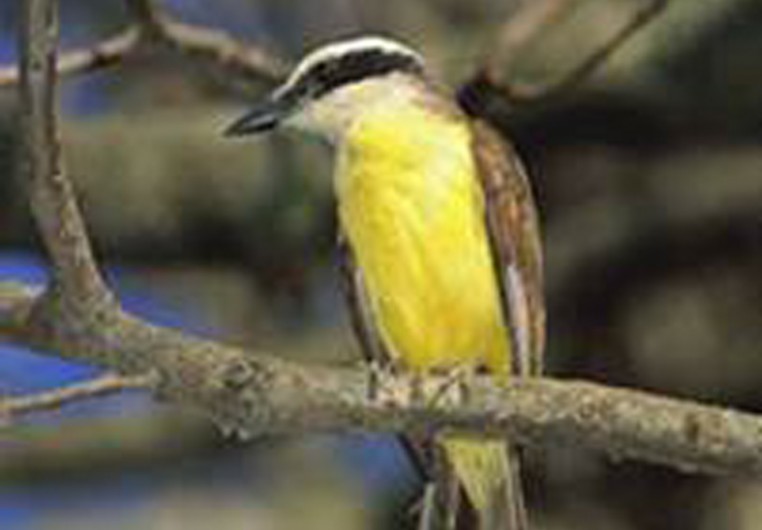Biodiversity
 Great Kiskadee or Lord Derby's Flycatcher
Pitangus sulphuratus | Linnaeus, 1766
Great Kiskadee or Lord Derby's Flycatcher
Pitangus sulphuratus | Linnaeus, 1766

Vocalization

Characterization: Medium-size species measuring about 22 cm in length. This bird is known far and wide for its singing, for its frequently announcing its name, and because of its bright yellow coloring on its belly, neck and on the top of its head, in addition to for having a white stripe that entirely surrounds its head and strong beak.
Distribution: All Brazilian regions.
Habitat: Crop fields, cities, orchards, forest edges, lagoon shores, rivers, streams, and dams.
Habits: Diurnal, monogamous and aggressive species that shows nervousness through sudden movements of its wings. It has the habit of sleeping in groups or of seeking a more sheltered place to spend the night.
Diet: Carnivorous, feeding on insects, amphibians, etc. It usually adds fish to its diet.
Breeding: This bird lays 4 eggs in a spherical nest with a side entrance at the top and built in the fork of a branch.
In the UFRA area: This bird species was in all studied habitats. This represents a broad spatial distribution. It is a very common species on the San Francisco Sugarmill and was spotted 147 times.



